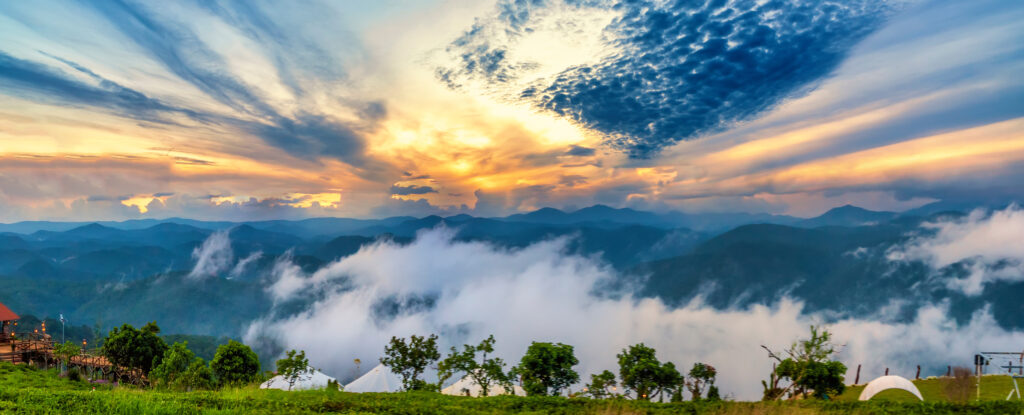
Vietnam, with its diverse landscapes and rich culture, is a year-round destination. However, the weather and the best time to visit Vietnam can vary significantly depending on which part of the country you’re exploring. From the cool, misty mountains of the north to the sun-soaked beaches of the south, Vietnam’s climate offers a wide range of experiences throughout the year.
The best time to visit Vietnam depends on what you want to see and do. Northern Vietnam, with its cooler climate, is perfect for trekking and outdoor adventures in the winter months, while central Vietnam boasts its best beach weather from February to August. Meanwhile, the tropical south enjoys a warm and pleasant climate, especially from November to April, making it ideal for exploring Ho Chi Minh City, the Mekong Delta, and stunning islands like Phu Quoc.
Before you plan your trip, it’s crucial to consider the seasonal differences across the country. Knowing the regional weather will help you decide the best time to visit Vietnam based on your preferences. Whether you’re looking to avoid the rainy season or chase the sunshine, understanding Vietnam’s climate will allow you to tailor your trip for the best experience.
Best Time to Visit Vietnam
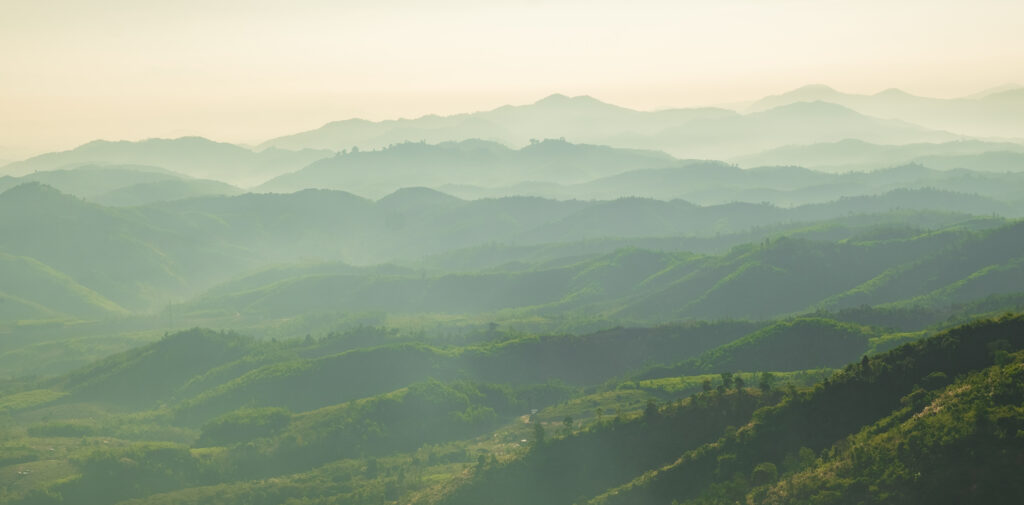
The ideal time to visit Vietnam is typically between December and April, when the weather is generally pleasant with little to no rain across most regions. However, the best time to visit Vietnam can vary depending on which part of the country you plan to explore. In the northern regions, for instance, December and January can be quite chilly, especially in the mountains. It’s important to consider the specific climate of each region and check the weather by month for a more tailored experience. Overall, March is often considered the best month to travel throughout Vietnam, as the weather is favorable in both the north and south, offering a perfect balance for any traveller.
Best Travel Times for Different Regions of Vietnam
Vietnam’s climate differs dramatically between the northern, central, and southern parts of the country. Here’s a regional breakdown to help you find the best time to visit Vietnam based on what you want to explore.
Best Time to Visit Northern Vietnam
- Ideal Months: October to April
- Weather: Cool and dry
- Top Activities: Trekking in Sapa, exploring Hanoi, cruising Ha Long Bay
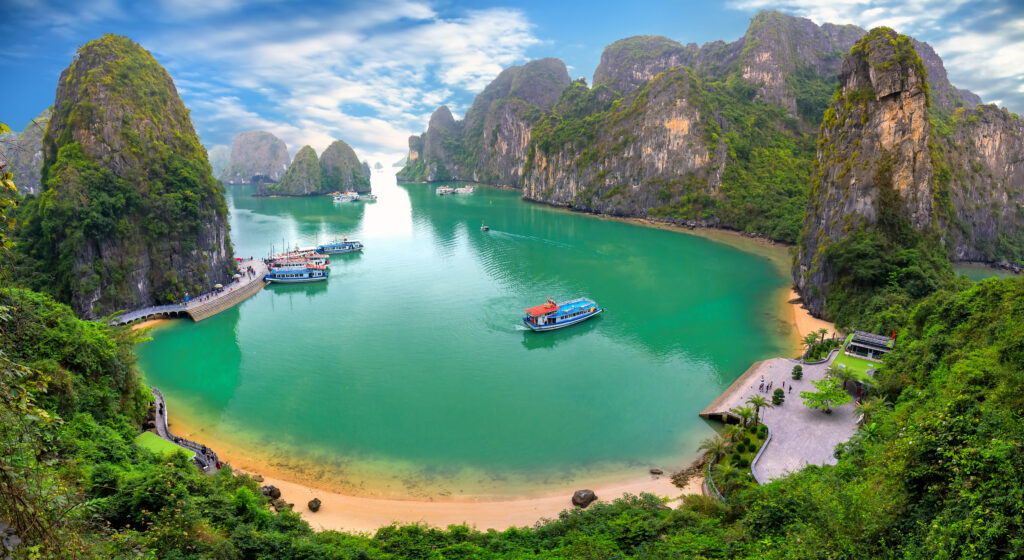
From October to April, northern Vietnam offers mild temperatures and clear skies, making it the perfect time to explore vibrant cities like Hanoi, the scenic beauty of Ha Long Bay, and the terraced rice fields of Sapa. For those who want to avoid the colder months, October, November, March, and April are ideal, with comfortable weather for sightseeing and outdoor adventures.

During the summer months from May to September, northern Vietnam experiences hot, humid weather with frequent rains. While the landscape becomes lush and green, the heavy rain can disrupt outdoor activities.
Best Time to Visit Central Vietnam
- Ideal Months: February to August
- Weather: Warm and dry
- Top Activities: Beach vacations in Da Nang, cultural tours in Hue and Hoi An
The central coast of Vietnam, home to destinations like Hoi An, Hue, and Da Nang, enjoys its best weather from February to August. These months are perfect for beach lovers, as sunny skies and warm temperatures provide ideal conditions for exploring both cultural landmarks and relaxing by the sea.
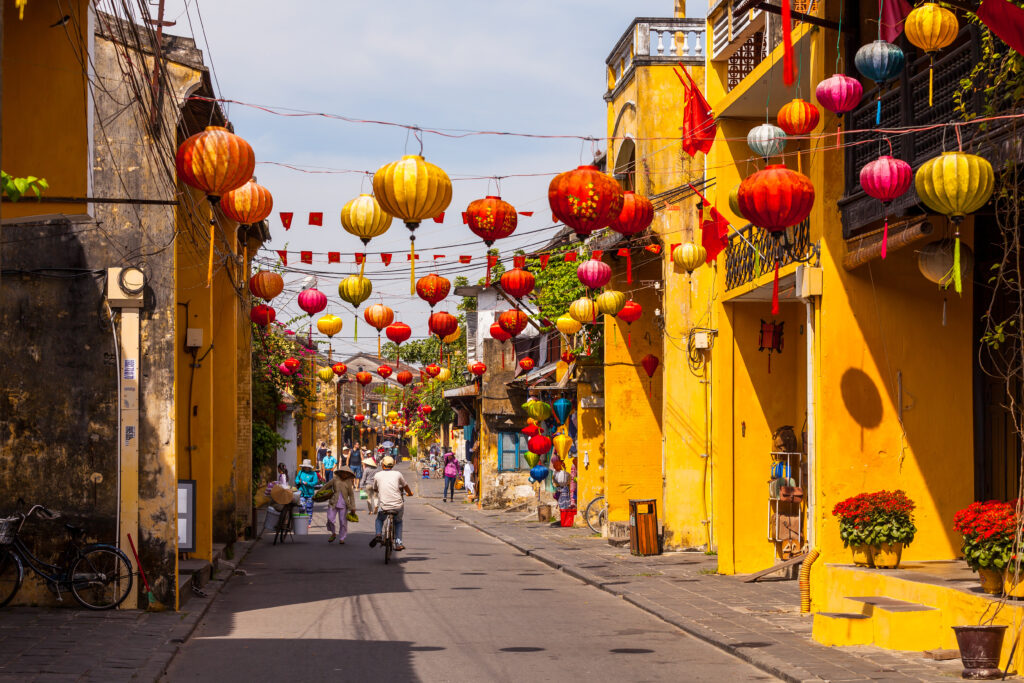
From September to January, central Vietnam enters its rainy season, with the risk of typhoons. While the rain can be heavy, it often doesn’t last all day, allowing time to explore between showers.
Best Time to Visit Southern Vietnam
- Ideal Months: November to April
- Weather: Warm and dry
- Top Activities: Exploring Ho Chi Minh City, Mekong Delta tours, relaxing on Phu Quoc’s beaches
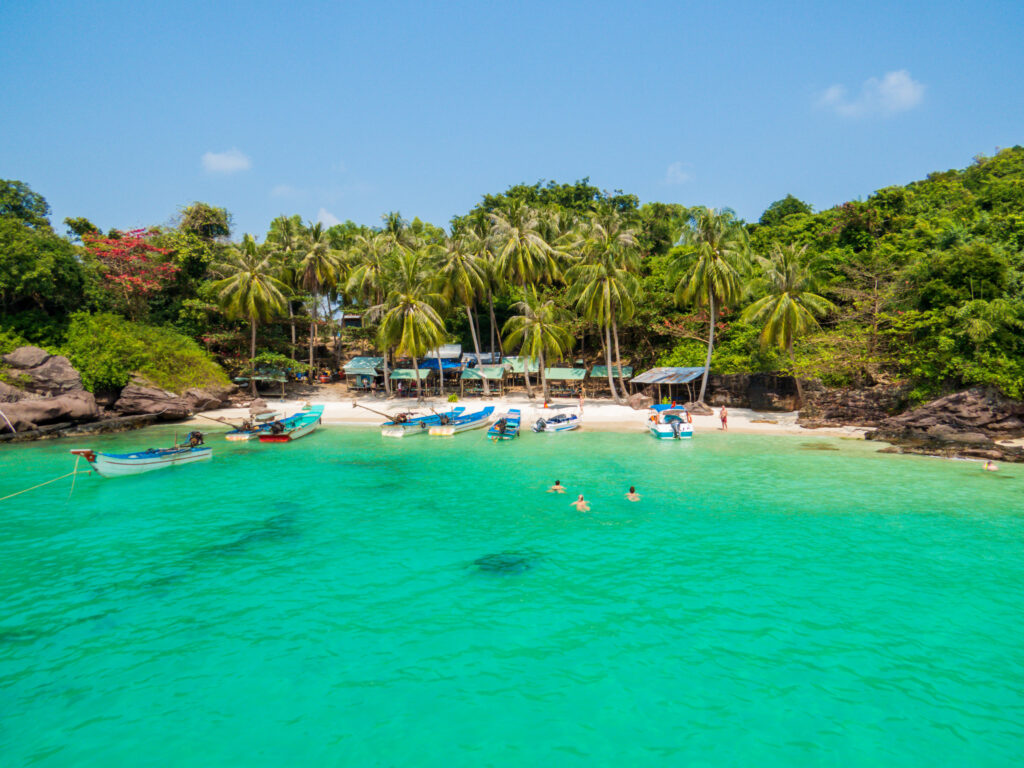
Southern Vietnam, including Ho Chi Minh City and the Mekong Delta, experiences its dry season from November to April. This period offers perfect weather for outdoor activities like boat trips through the delta or beach days on Phu Quoc. From May to October, the south sees its rainy season, but showers are usually brief, leaving plenty of time to enjoy activities in between.
High Season vs. Low Season in Vietnam

Vietnam has distinct high and low tourism seasons, and understanding these can help you choose the best time to visit Vietnam according to your budget, crowd tolerance, and weather preferences.
- High Season (November to April): This is the most popular time to visit Vietnam, as the weather is pleasant in most regions. However, popular destinations like Hoi An, Ha Long Bay, and Ho Chi Minh City will be more crowded, and accommodation prices tend to be higher. If you plan to visit during the high season, it’s important to book accommodations and tours well in advance.
- Low Season (May to October): The low season coincides with the rainy season in many parts of Vietnam. Despite the rain, this is a good time for budget travelers, as you’ll find lower prices and fewer tourists. Rain showers are often brief and tend to occur in the afternoons, allowing for morning sightseeing.
Tip: Tet New Year (Late January to February)
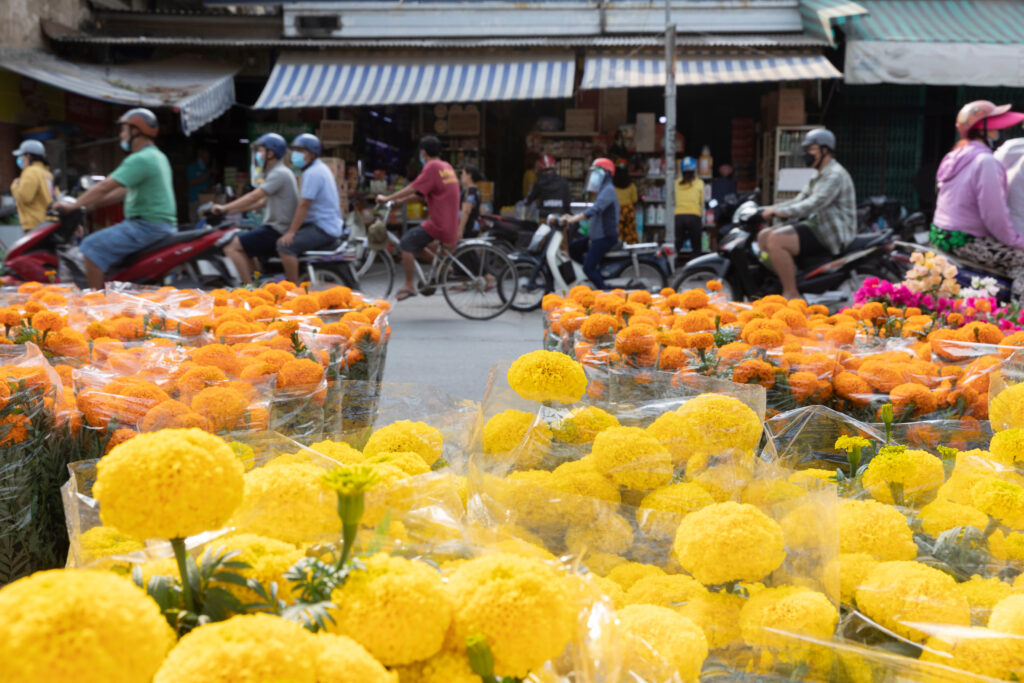
Tet, the Vietnamese Lunar New Year, is the most important and widely celebrated holiday in Vietnam, usually falling between late January and February. During Tet, families across the country come together to honor their ancestors, celebrate with feasts, and exchange gifts. For travelers, visiting during Tet can provide a unique and fascinating glimpse into Vietnam’s rich cultural traditions, with colorful festivals, flower markets, and traditional performances lighting up the streets.
However, it’s important to be aware of the challenges that come with traveling during Tet. Accommodation prices spike significantly, transportation can be more expensive, and many businesses, restaurants, and attractions close for several days as locals celebrate with their families. Flights and trains are often fully booked well in advance, so if you plan to travel during Tet, it’s essential to make your arrangements early to avoid higher costs and limited availability. While Tet offers an incredible cultural experience, careful planning is key to ensuring a smooth visit during this busy time of year.
Weather in Vietnam Throughout the Year
Vietnam’s climate is diverse, and its weather patterns change significantly across the country. Each season offers a unique experience depending on where you are. Whether you’re trekking through the northern mountains, enjoying the central coast, or exploring the tropical south, understanding the seasons will help you plan the perfect trip. Here’s a breakdown of what you can expect from the weather in Vietnam throughout the year:
Winter (December to February)

Winter in Vietnam brings a wide range of conditions, depending on the region. In northern Vietnam, especially in areas like Hanoi, Sapa, and Ha Giang, the weather is cool and dry, with temperatures that can drop significantly, especially in the mountains. This is an ideal time to explore the scenic landscapes of northern Vietnam without the discomfort of heat and humidity. Sapa and Ha Giang even see occasional frost and snow in the higher elevations, making it a unique experience for travelers seeking something different.
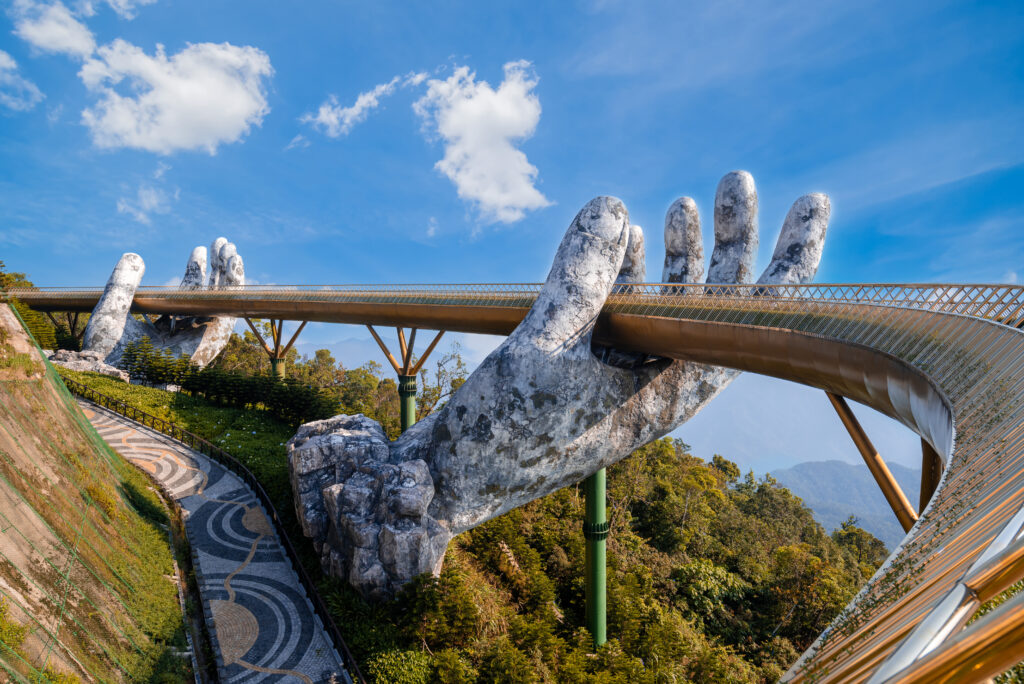
In central and southern Vietnam, however, winter means mild and pleasant weather. Cities like Da Nang, Hoi An, and Hue enjoy warm temperatures and clear skies, making it a great time for beach lovers and cultural enthusiasts alike. In the south, destinations like Ho Chi Minh City and Phu Quoc experience dry and sunny conditions, perfect for outdoor adventures and relaxing on the beaches.
Spring (March to May)
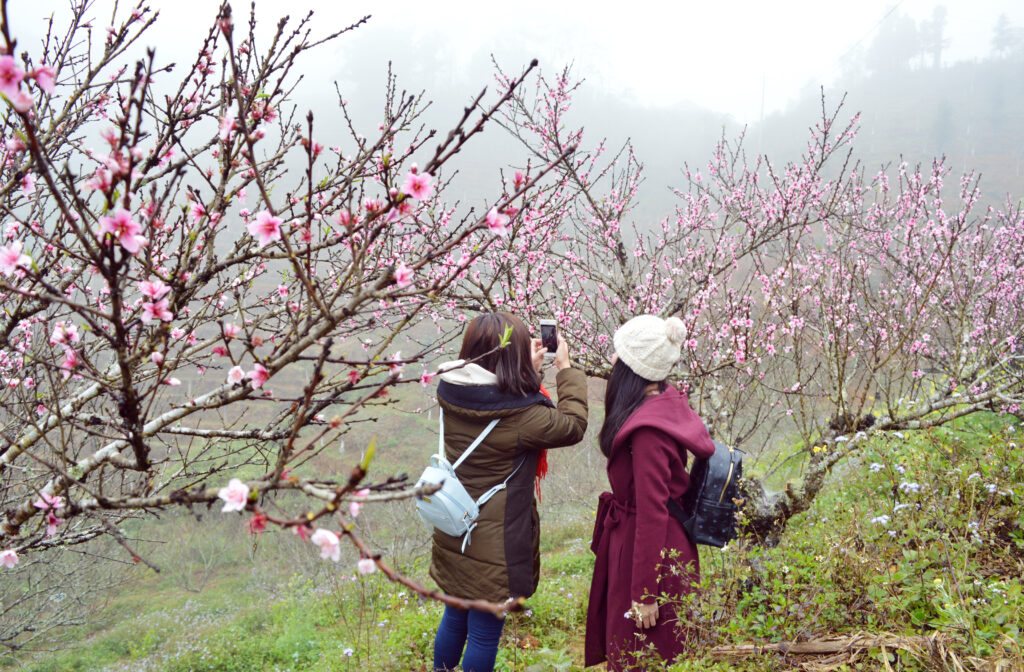
Spring is one of the best seasons to visit Vietnam, as temperatures across the country start to rise, but the intense heat of summer hasn’t yet arrived. In northern Vietnam, spring means milder weather with blooming flowers, especially in the rural areas, creating picturesque landscapes perfect for photography and trekking.
In central Vietnam, cities like Hue and Da Nang experience warm, pleasant temperatures, making it a great time to explore cultural sites like the Imperial City or lounge on the region’s beautiful beaches. Hoi An, known for its lantern-lit streets, is especially charming during this season, with dry weather enhancing the experience of exploring its ancient town and riverside markets.
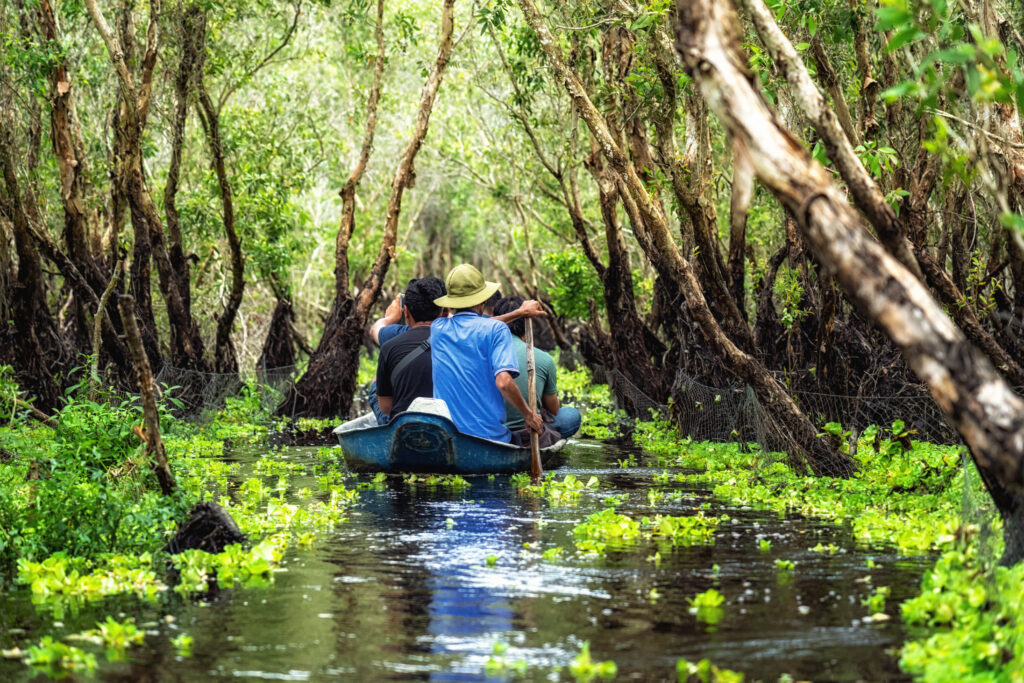
In southern Vietnam, the dry season continues with sunny days and clear skies, making it a fantastic time to explore the Mekong Delta, visit bustling Ho Chi Minh City, or relax on the beaches of Phu Quoc. Spring is a wonderful time to enjoy Vietnam’s lush landscapes and cultural landmarks without the crowds of peak travel season.
Summer (June to August)
Summer in Vietnam is characterized by hot and humid weather across much of the country, especially in the north and south. In northern Vietnam, cities like Hanoi and the northern countryside experience high temperatures and heavy humidity. However, this is also the rainy season, which means frequent downpours, particularly in the afternoons. Despite the heat, summer can still be an exciting time to visit, especially for those interested in exploring the lush, green landscapes brought to life by the monsoon rains.
Central Vietnam, including the coastal cities of Da Nang and Nha Trang, experiences relatively stable weather during the summer, making it one of the few regions in the country where beach lovers can still enjoy the sun. However, by late summer, central Vietnam may begin to see the onset of typhoon season, bringing occasional storms and heavy rainfall.
In southern Vietnam, the summer months coincide with the rainy season. While the rains can be intense, they typically come in short bursts, usually in the afternoons. The rains bring relief from the heat, and the southern countryside becomes lush and vibrant. Despite the rain, southern Vietnam remains a viable destination for visitors, as many activities, such as exploring the Mekong Delta or Ho Chi Minh City, can still be enjoyed between showers.
Autumn (September to November)

Autumn in Vietnam is a transitional period that offers a variety of experiences depending on the region. In northern Vietnam, autumn brings cooler temperatures and clear skies, making it the perfect season for trekking in the mountains of Sapa or exploring the countryside around Ha Giang. The fall foliage in these areas is stunning, adding a unique charm to the already breathtaking landscapes. This season is also ideal for sightseeing in Hanoi, where the streets are less crowded and the weather is cool and comfortable.
However, central Vietnam experiences its rainy season during the autumn months. Heavy rains and occasional typhoons are common in cities like Hue, Da Nang, and Hoi An, so it’s important to be prepared for possible weather disruptions. While you can still enjoy some of the region’s cultural and historical sites, be mindful that beach days may be limited during this time.
In the south, autumn brings a mix of rain and warm temperatures, but as the season progresses, the rains begin to taper off, especially in late November. This is a great time to visit Ho Chi Minh City and the surrounding areas as the rainy season winds down, and the landscapes remain lush and green from the summer rains
Traveling During the Rainy Season
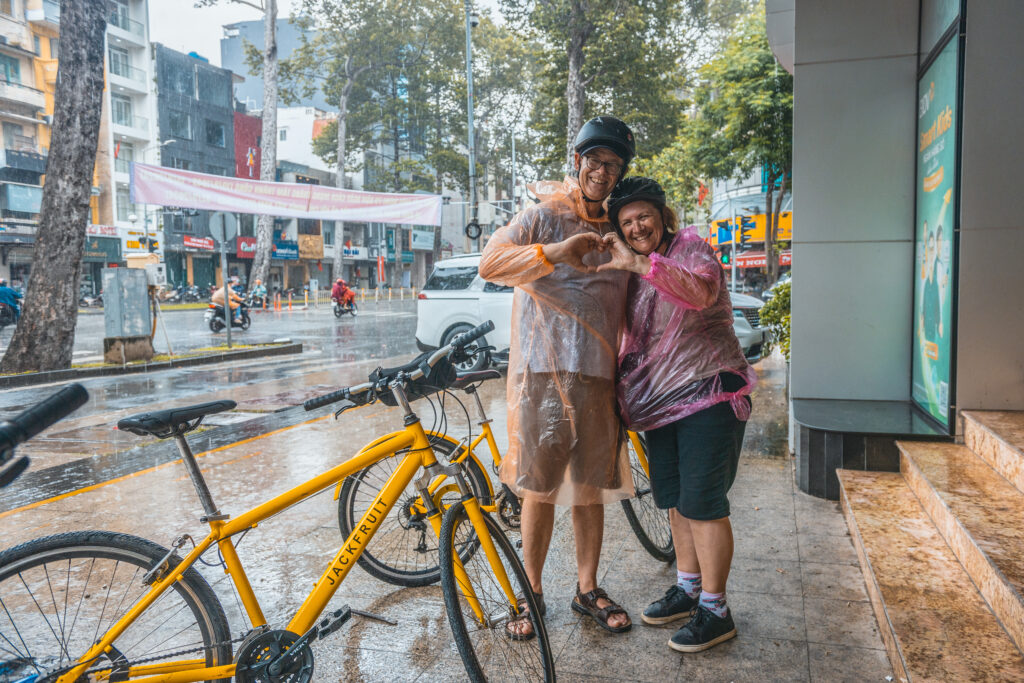
Traveling during Vietnam’s rainy season offers both rewards and challenges. The rainy season varies by region: northern and southern Vietnam experience rain from May to October, while central Vietnam sees its wettest months from September to December, sometimes with typhoons. Although it doesn’t rain every day, the showers are typically short but heavy, often in the afternoon.
One of the main advantages of traveling during this time is the lush, green landscapes and fewer tourists, allowing you to explore places like Ha Long Bay or the Mekong Delta with more tranquility. Accommodation and tour prices are also lower. However, heavy rains can lead to flooding in certain areas, particularly in central Vietnam, and transportation disruptions are more common, so flexibility in your plans is essential.
To make the most of your trip, consider focusing on indoor activities like museums and markets in cities such as Ho Chi Minh City or Hanoi. Since rain often occurs in the afternoon, mornings can still be used for outdoor exploration. Be sure to pack a light raincoat, waterproof shoes, and be open to adjusting your itinerary if needed.
Weather in Vietnam: Month-by-Month Guide
Vietnam’s weather varies significantly by region, and knowing what to expect each month can help you plan the perfect trip. Below is a month-by-month breakdown of the weather across the country, highlighting seasonal changes and what you can expect during your visit. Keep in mind that these are general patterns, and sometimes the rainy season may start earlier or later than expected. For more specific insights, you can also check local holidays and events that occur throughout the year.
January
January offers dry and pleasant weather across most of Vietnam, with a few exceptions. Northern regions like Sapa and Ha Giang can get quite cold, especially in the mornings and late evenings, making it essential to pack layers. On the other hand, if you’re after some sun, head to Phu Quoc, where the beaches bask in guaranteed sunshine. Halong Bay may be a bit misty at this time, so views could be obscured, but it’s still a mystical sight.
February
In February, the cold mornings in the north begin to ease, but it can still feel chilly in places like Hanoi and Ha Giang. The rest of the country, particularly the central and southern regions, enjoys warm, dry weather, making it ideal for beach lovers. Do keep in mind that Tet, the Vietnamese Lunar New Year, usually falls in February, meaning many businesses, museums, and restaurants will close for about a week. If you’re visiting during Tet, plan ahead.
March
March is high season for travelers in Vietnam and arguably the best time to visit. The beaches in Mui Ne, Con Dao, and Nha Trang start to come alive with excellent weather. Hoi An also shines as a fantastic beach destination by the end of the month. If you’re heading to Halong Bay, expect clear blue skies without the haze, perfect for cruising among the limestone karsts.
April
Like March, April is one of the best times to visit Vietnam, with fantastic weather across the country. Crowds increase as more tourists arrive to enjoy the clear skies and warm temperatures. If you plan to visit popular destinations, it’s best to book accommodations in advance.
May
May marks the beginning of warmer weather, but it’s still a great time to visit, especially if you’re looking to avoid the crowds and higher prices of peak season. Rain hasn’t fully set in yet, but by the end of the month, you may experience some showers in the north and south. It’s an ideal time for budget travelers who want to catch the tail end of the dry season without the April rush.
June
June brings occasional rain in the north and south, though Hanoi, Mai Chau, and Halong Bay still enjoy clear skies most of the time. Central Vietnam, including destinations like Lang Co and Hoi An, remains sunny and is a beautiful beach destination. June is also a good month to take advantage of the off-season prices before the local school holidays start.
July
July is an excellent time to visit Central Vietnam, with long hours of sunshine and very little rain. The rest of the country may experience some showers, but these won’t significantly impact your travel plans. Expect beach destinations like Da Nang and Hoi An to be at their best, and outdoor activities in the region to be in full swing.
August
August is another good time to visit Central Vietnam, as the weather remains sunny and warm. While the northern and southern regions may experience occasional rain, the showers are often brief. Although flight prices may be higher, many hotels offer great deals during this low tourist season, so it’s worth looking out for promotions.
September
In September, you can catch the last of the sunshine on Vietnam’s central coast before the rainy season intensifies toward the end of the month. Northern Vietnam and Southern Vietnam are generally quite wet during this time, but you’ll find that hotel prices drop significantly, offering excellent value for travelers willing to brave the rain.
October
By October, the sun starts returning to northern Vietnam, making it a perfect time to explore Sapa or the rugged landscapes of Ha Giang. While this is not the best time for a beach vacation due to rain in central Vietnam, it’s a fantastic time to explore the cultural and natural beauty of the north. Traveling in October also means fewer crowds, giving you a more peaceful experience.
November
The high season kicks off again in November, as cooler winter months arrive in the north. Sapa and Hanoi become attractive destinations for those seeking crisp, cool air. Meanwhile, the rest of the country is generally dry, although the central region may still experience some showers. It’s a great time to visit Vietnam if you’re looking to avoid extreme weather and enjoy a wide range of activities.
December
December brings cool, dry weather to Northern Vietnam, making it perfect for exploring Hanoi or trekking through the scenic mountains of Sapa. In Southern Vietnam, including Ho Chi Minh City and Phu Quoc, the dry season is in full swing, offering warm, sunny days ideal for beach lovers. If you’re planning to visit Vietnam during the Christmas period, especially in popular beach destinations like Phu Quoc, book accommodations early, as this is a busy time for both local and international tourists.
Let’s Wrap It Up
Vietnam is a country of year-round appeal, with each region offering its own unique charm depending on the season. The best time to visit Vietnam depends on what you’re looking for—whether it’s trekking in the cool northern mountains, enjoying the beaches in central Vietnam, or exploring the vibrant culture of the south. By understanding the regional weather and planning accordingly, you can create the perfect itinerary to suit your preferences.
Whether you visit during the high season or low season, Vietnam promises to deliver an unforgettable travel experience. So start planning your adventure and discover the magic of Vietnam’s diverse landscapes and rich culture!
Ho Chi Minh City Cycling Tour In Ho Chi Minh City (Saigon) – Vietnam

At Jackfruit Adventure, we organize Ho Chi Minh City Cycling Tour and Team Building Ho Chi Minh. With a deep knowledge of Saigon city and local connections, we believe we can give you an awesome bonding time together. Contact us today if you have any requests or questions to prepare a trip for your team to bond in Ho Chi Minh – Vietnam.




